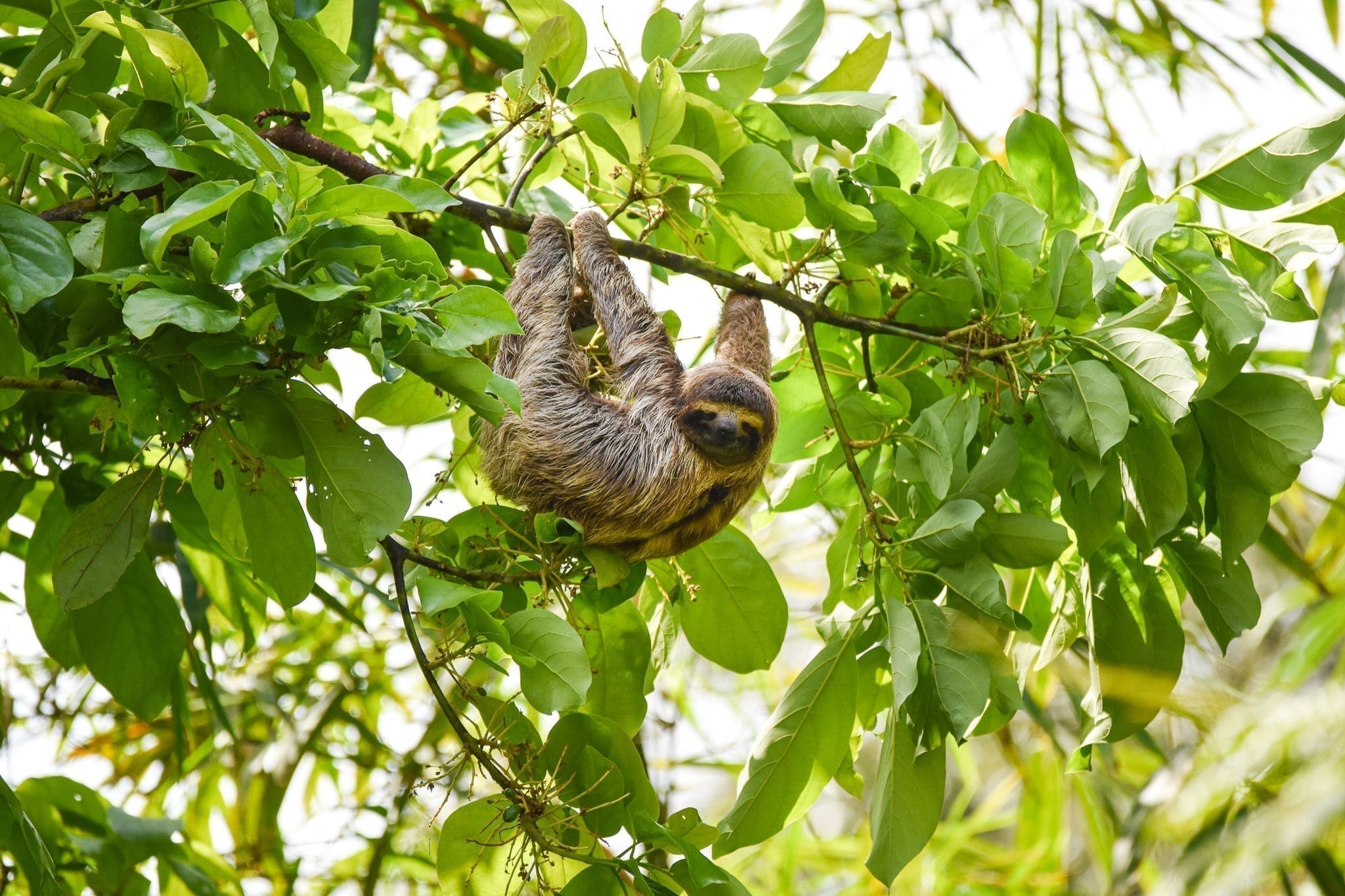
Bocas del Toro
[id de la galería ux=”4″]
Bocas del Toro: Behind the Mangroves
Venture Beyond Expectations into Vibrant Ngäbe Culture
Our boat ran parallel to an ominous sky. The air swirled cool, and the ocean turned an electric turquoise that was only further intensified by the indecisive black-tipped clouds. To storm or not to storm: that was the question.
I zipped up my rain jacket and slipped my wellies back on, anticipating that Mother Nature always gets her way. The sea was slick like freshly Windexed glass, and if you didn’t know what you were looking for, you could easily miss the mangrove entrance to Salt Creek. Our captain has never missed; to him, there is nothing hidden about this place. To me, though, I had no idea what really lay beyond the maze of mangroves we were about to carefully cruise through.
This is the other side of Bocas del Toro — beyond booze and beautiful beaches.
You’ve seen the alluring postcard — a colorful crochet hammock hung between two royal palms drooping over golden sea-kissed sand. Bare feet, tan lines and an umbrella-cocktail day buzz are part of the picture, and maybe a dolphin or two synchronized jumping beneath a setting sun. This is paradise.
Cue nighttime and the reggae turns up. Sandy bodies turn into sweaty bodies, and tourists and locals dance the night away in one of many inviting drinking holes. Those really keen on day partying can even island-hop booze crawl with the famous Filthy Friday, or let their inner pirate out on a pirate ship bar anchored in the bay. Bocas del Toro has a well-earned reputation of being a haven for all-day, all-night happy hour-type activities.
Most tourists miss “the mangrove entrances” but it’s not their fault. If you don’t know what you’re looking for, it’s easy to miss!
Look wider, go deeper
Here’s what you are missing, though.
Bocas del Toro, Costa Rica’s Caribbean neighbor to the south in Panama, is one of the homelands of the Ngäbe, the second largest indigenous group in Central America after the Maya. This resilient community has been uprooted from the islands more than once, first when Columbus was around and later when the United Fruit Company showed up with high hopes of a highly successful banana industry. Now with the Bocas del Toro’s ever-growing tourism industry, the benefits aren’t really reaching the outskirts where most Ngäbe live.
While there is a dark side to rapid tourism growth anywhere in the world, a surge in visitation can right the wrong for some of the exploitation by ensuring that the allocation of benefits reach the people who were here first and were essentially, in one way or another, pushed out of the way. The Ngäbe have a lot to offer by way of their culture, crafts, cacao expertise, relationship with the environment, knowledge of plant medicine, traditional forest and sea-to-table dishes, along with access to wildlife-heavy trails.
Tourists do find their way in trickles to one of the Ngäbe communities or Ngäbe-run tours. However, indigenous tourism is still predominantly out of sight, out of mind for many Bocas visitors. Lack of information, advertising and instant accessibility are partly to blame. Several people and groups in Bocas del Toro are working to change that.
An added benefit is knowing your tourist dollars are contributing to the well being of the indigenous communities you visit.
Rara oportunidad
What’s being missed by failing to recognize that these types of experiences are available comes at the cost of missing an extraordinary opportunity to broaden your world perspective. Rarely do such doors open to increase your cultural sensitivity and tolerance, gain respect for a way of living that is far different from your own, and perhaps take away a lesson or two that you can apply to your own life. Isn’t that what we need in the world today — more acceptance, respect, and open-mindedness?
For being such a small archipelago, Bocas del Toro offers quite a few fascinating indigenous tours that you can embark on during your stay. An added benefit is knowing your tourist dollars are contributing to the well being of the indigenous communities you visit, just as they help keep foreigner and mainland-owned businesses afloat in Bocastown and other waterfront locations dotted throughout the islands.
Regalo exclusivo
Our boat puttered deeper and deeper into the mangrove channel until we reached a dead-end dock. The black mangroves blocked out the sprinkle of rain resulting from a storm that was all bark and no bite. They also added a mystical element of secrecy that made this experience feel like a gift.
The day’s options included several nature hikes where wildlife was bountiful. Another highlight was a foraging experience ending in lunch prepared with some of the ingredients gathered in the forest, including freshly harvested hearts of palm. We also enjoyed a demonstration of how local crafts are made using materials collected from nature. Other tours in nearby communities provide access to a sacred bat cave, an introduction to plant medicine and natural plant dyes, and knowledge of how chocolate is made (tasting included!).
This was not my last visit to Ngäbe communities but certainly, one that opened my eyes to a wealth of wisdom that has been passed down from generation to generation. Despite cultural and geographical barriers, there is so much we can learn from one another and so many ways we can support each other.
Isn’t that the point: to live and learn, connect and communicate, and seek experiences that benefit all involved?
This is the other side of Bocas del Toro and one that should not be missed.
How to Seek and Set Up Indigenous Tours in Bocas
- Ask your hotel/hostel or Airbnb/B&B host for assistance booking a tour
- Check out these two websites for more information
